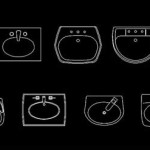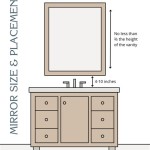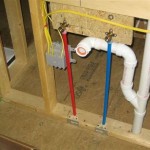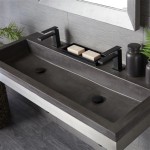How To Replace A Washer In Bathroom Sink Drain Plug
A leaky bathroom sink drain can be a persistent annoyance and a source of water waste, leading to higher water bills and potential water damage to the surrounding cabinetry. Often, the culprit behind this leak is a worn or damaged washer on the drain plug. Replacing this small component is a relatively straightforward DIY project that can save money on plumber fees and restore the proper function of the sink drain.
This article will provide a comprehensive guide on how to replace the washer in a bathroom sink drain plug, covering the necessary tools, step-by-step instructions, and important considerations to ensure a successful repair. This guide assumes a standard pop-up drain assembly, which is the most common type found in residential bathrooms.
Key Points to Consider Before Starting
Before beginning the replacement process, it is crucial to understand the type of drain assembly and the specific washer needed. Neglecting these initial considerations can lead to wasted time and incorrect parts.
Firstly, identify the type of drain assembly. While pop-up drains are common, other types, such as lift-and-turn drains, exist. The replacement process may vary slightly depending on the drain type. This guide focuses specifically on the pop-up drain mechanism, which is characterized by a lever that controls the drain plug's up-and-down movement.
Secondly, determine the correct size and type of replacement washer. Washers come in various sizes and materials, including rubber, silicone, and neoprene. Using the wrong size or material can result in an ineffective seal and continued leaks. The best approach is to remove the old washer and take it to a hardware store to find an exact match. Alternatively, the sink drain assembly packaging may specify the washer size needed. Measuring the inner and outer diameter and thickness of the old washer can also help in identifying the correct replacement.
Thirdly, safety precautions are important. Before starting any plumbing repair, turn off the water supply to the sink. This prevents accidental flooding and simplifies the repair process. Locate the shut-off valves under the sink. Typically, there are two valves, one for hot water and one for cold water. Turn both valves clockwise until they are fully closed. After closing the valves, turn on the faucet to relieve any remaining pressure in the lines.
Tools and Materials Required
Having the necessary tools and materials readily available will contribute to a smoother and more efficient repair process. The following is a list of essential items:
* New Washer: Ensure it matches the size and material of the existing washer.
* Adjustable Wrench: For loosening and tightening drain assembly components.
* Slip-Joint Pliers (Optional): Can be helpful for gripping larger parts.
* Basin Wrench (Optional): Useful for loosening the drain nut if it's difficult to reach.
* Screwdriver: Suitable for removing the pivot rod retaining clip or nut.
* Penetrating Oil (Optional): To loosen stubborn nuts and bolts.
* Clean Rags or Towels: To absorb water and clean up spills.
* Small Container or Bucket: To catch any water that may drip during disassembly.
* Flashlight or Headlamp: To provide adequate lighting under the sink.
* Plumber's Grease (Silicone Grease): To lubricate the new washer, making insertion and a watertight seal easier.
Step-by-Step Instructions for Washer Replacement
The following steps outline the process of replacing the washer on a bathroom sink drain plug.
Step 1: Prepare the Work Area. Place a bucket or container under the drain to catch any residual water. Position a flashlight or headlamp to illuminate the work area under the sink. Spread out rags or towels to protect the cabinet floor and provide a clean surface for tools.
Step 2: Disconnect the Pop-Up Drain Linkage. Locate the horizontal pivot rod that connects the pop-up drain lever to the drain plug mechanism. This rod is typically held in place by a retaining clip or nut. Use a screwdriver or wrench to remove the retaining clip or nut. Carefully pull the pivot rod out of the drain assembly. Be mindful of any small washers or o-rings on the rod, as these may need to be replaced as well.
Step 3: Remove the Drain Plug. After disconnecting the pivot rod, the drain plug should be free to lift out of the sink drain. Gently pull the drain plug upwards and out of the drain opening. Inspect the drain plug for any signs of damage or corrosion.
Step 4: Access the Washer. The washer is usually located at the bottom of the drain plug, near the part that sits inside the drainpipe. It might be held in place by a small nut or be press-fitted. If there's a nut, carefully loosen it with an appropriate wrench, taking care not to damage the drain plug itself. If the washer is press-fitted, you may need to carefully pry it out using a small, flat-bladed screwdriver or similar tool. Be very gentle to avoid scoring or damaging the drain plug's surface.
Step 5: Remove the Old Washer. Once accessible, remove the old washer. Observe its condition. If it's cracked, brittle, or significantly deformed, it confirms that it was the source of the leak. Clean the area where the washer was seated to remove any debris or residue. A clean surface ensures proper contact with the new washer.
Step 6: Install the New Washer. Position the new washer in the same location as the old one. If the washer is held in place by a nut, carefully tighten the nut until it is snug, but do not overtighten, as this could damage the washer or the drain plug. If the washer is press-fitted, gently push it into place until it is securely seated. Applying a small amount of plumber's grease (silicone grease) to the washer before installation can aid in creating a watertight seal and ease installation.
Step 7: Reinstall the Drain Plug. Carefully reinsert the drain plug into the sink drain, ensuring that it is properly aligned. The opening in the drain plug should align with the opening on the drainpipe where the pivot rod will be reinserted.
Step 8: Reconnect the Pop-Up Drain Linkage. Reinsert the pivot rod through the opening in the drainpipe and through the opening in the drain plug. Secure the pivot rod with the retaining clip or nut that was removed earlier. Ensure that the linkage moves freely and that the drain plug opens and closes smoothly.
Step 9: Test for Leaks. After reassembling the drain, turn on the water supply to the sink. Fill the sink with water and check for leaks around the drain plug and the drainpipe connections beneath the sink. If leaks are observed, tighten any loose connections and recheck. If leaks persist, disassemble the drain again and inspect the washer and connections for proper seating and alignment. Double-check that all parts are correctly assembled. It is possible that the drainpipe connections themselves are leaking and need tightening or plumber's tape. If the drainpipe connections are the source of the leak, it may be necessary to disassemble the drainpipe and apply new plumber's tape. Plumber's tape should be wrapped around the threads of the pipes in the direction of tightening to prevent it from unwinding.
Step 10: Final Adjustments. Once the drain is leak-free, adjust the pop-up drain linkage to achieve the desired drain plug height when the lever is in the open and closed positions Adjustments can usually be made by adjusting the length of the rod connecting the pop-up lever to the pivot rod. Some pop-up drain assemblies have a series of holes on the connecting rod. You can get a different drain closing height by moving the connecting rod to a different hole. Make sure the pop-up drain lever operates smoothly and the plug seals properly.
By following these steps, one can successfully replace the washer in a bathroom sink drain plug, resolving common leak issues and promoting responsible water usage. If you are not comfortable performing this repair, it is always recommended to consult a qualified plumber.

How To Replace A Sink Stopper Quick And Simple Home Repair

Bathroom Sink Popup And Stopper Problems

How To Replace Bathroom Sink Stopper Avg Cost 25 65 1 2hrs

How To Fix Pop Up Drain Waste Plug
How To Install Bathroom Sink Drain Queen Bee Of Honey Dos

How To Replace Or Maintain A Sink Pop Up Drain Assembly

How To Replace A Sink Stopper Quick And Simple Home Repair
How To Install Bathroom Sink Drain Queen Bee Of Honey Dos

How To Replace A Drain In The Bathroom Sink Right Way
How Do Plumbers Line Up The Pivot Rod With Hole In Replacement Sink Stopper When You Can T See What S Going Drain Pipe Is There A Trick To Getting
Related Posts







